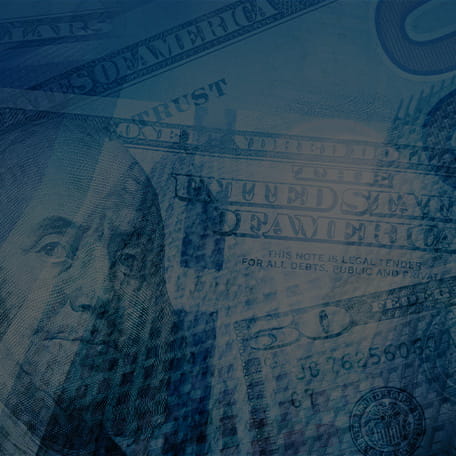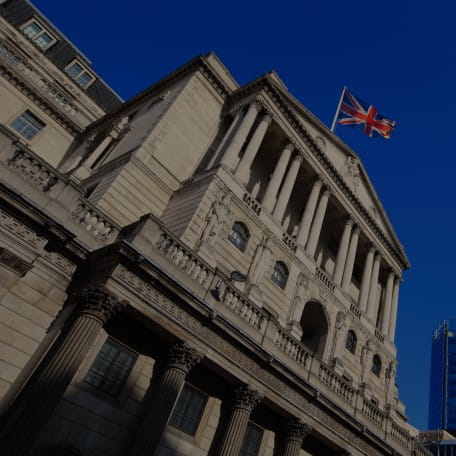Gold has been back in the spotlight in recent weeks, as the collapse of Silicon Valley Bank and the implosion of Credit Suisse saw investors rush to perceived ‘safe’ havens of gold and gilts. The price of gold rose to a record high of £1,634 per ounce in late March, although it has since slipped back to £1,623.75 (as of 12 April 2023).
But is all that glistens really gold? Here two writers put the case for and the case against, and leave you to make up your own mind…
For
A popular legend is that an ounce of gold was worth around 350 loaves of bread several thousand years ago, and that it is roughly the same over time. In practice, gold has been rallying in recent months and an ounce is worth around $2,000, which divided by 350 is about £4.50 in sterling terms. So substantially more than a loaf of bread – unless it’s artisan sourdough perhaps – implying that gold has certainly held its value since the times of King Nebuchadnezzar.
Gold is sometimes touted as a hedge against inflation. This correlation is less apparent over the shorter term and does tend to break down under most analyses. But gold does tend to hold its value over the longer term.
Typically there is a negative correlation between the gold price and interest rates. The rationale is that high interest rates indicate a strong economy, in which investors will have the confidence to buy equities and bonds, whereas low interest rates can imply a recession and investors seeking safe haven assets such as gold.
Many commentators now view developed market central banks as being close to their peak in tightening. Bond yield curves show an anticipation that interest rates will fall in the next year or so to counter the impacts of slowing economies caused by the higher interest rates. If interest rate falls do indeed follow, then this could support gold prices.
The gold price often rises sharply in a crisis because of its safe haven status. For example, it rose strongly at the beginning of the Ukraine crisis as well as during the US banking problems in March. There are still worries that more turbulence lies ahead for the world and this could support gold prices further this year.
Global demand for gold appears to be strong too. Russia and China appear to be building their gold reserves with speculation that this is to back a new currency that will be a global rival to the US dollar. Certainly, the evidence points to substantial gold purchases by central banks. The World Gold Council reported that central banks accumulated gold at the fastest pace on record in January and February 2023, buying a net 125 tonnes, the highest amount for a year to date period since 2010, when banks became net buyers. Singapore and Turkey bought the most, but China and Russia were third and fourth respectively.
It would likely be a mistake to invest a whole portfolio in gold, but it would also be a mistake to ignore its role as a long-term store of value, especially in times of uncertainty and volatility as the world is currently going through. Gold can add diversification benefits to a portfolio and act as insurance against potential crises and uncertainty.
Against
While investors often turn to gold in volatile times, it is arguably unclear why. After all, it has little or no intrinsic value. While it’s true that investors might benefit from gains if they sell at a profit, It provides no cashflows so you can’t derive a value for it from discounted cash flow (DCF) or yields.
For most assets you can derive intrinsic value from the returns they provide (dividends, interest rates) or from their worth when used to produce something else. For example, the value of oil/gas is derived from what people are willing to pay for heating, flights and more besides.
In contrast to other commodities such as oil or copper, gold has very few uses which would give it any fundamental sense of value. You can’t eat it, burn it to create energy, or build other objects of worth from it.
Where gold is seen as having its main value (other than through being viewed as a bulwark in times of turmoil) is through its connection to jewellery – the value of which is again subjective rather than fundamental.
So arguably, the value gold has is just the one that it is perceived to have – there’s nothing underpinning it. It’s the ultimate self-fulfilling prophecy. While this is fine so long as these perceptions hold up – and admittedly they have done for thousands of years – if the house of cards falls down, it could be quite the drop.
Investing in gold is fundamentally about sentiment and confidence, the trade in gold is driven by this and the expectation of what other investors’ behaviour will be, rather than being based on investment fundamentals.
It’s a self-fulfilling prophecy that it should perform well in certain conditions (inflation, volatility, etc) – there’s little logic behind it. Choosing to put your money in gold is speculation not fundamental investment.
If the main bull point is that it’s pretty or that other people say it’s worth something, that’s a pretty flimsy reason to be allocating a portion of your pension to it.
KEY RISKS
Past performance is not a guide to future performance. The value of an investment and the income generated from it can fall as well as rise and is not guaranteed. You may get back less than you originally invested.
The issue of units/shares in Liontrust Funds may be subject to an initial charge, which will have an impact on the realisable value of the investment, particularly in the short term. Investments should always be considered as long term.
DISCLAIMER
This is a marketing communication. Before making an investment, you should read the relevant Prospectus and the Key Investor Information Document (KIID), which provide full product details including investment charges and risks. These documents can be obtained, free of charge, from www.liontrust.co.uk or direct from Liontrust. Always research your own investments. If you are not a professional investor please consult a regulated financial adviser regarding the suitability of such an investment for you and your personal circumstances.
This should not be construed as advice for investment in any product or security mentioned, an offer to buy or sell units/shares of Funds mentioned, or a solicitation to purchase securities in any company or investment product. Examples of stocks are provided for general information only to demonstrate our investment philosophy. The investment being promoted is for units in a fund, not directly in the underlying assets. It contains information and analysis that is believed to be accurate at the time of publication, but is subject to change without notice. Whilst care has been taken in compiling the content of this document, no representation or warranty, express or implied, is made by Liontrust as to its accuracy or completeness, including for external sources (which may have been used) which have not been verified. It should not be copied, forwarded, reproduced, divulged or otherwise distributed in any form whether by way of fax, email, oral or otherwise, in whole or in part without the express and prior written consent of Liontrust.










